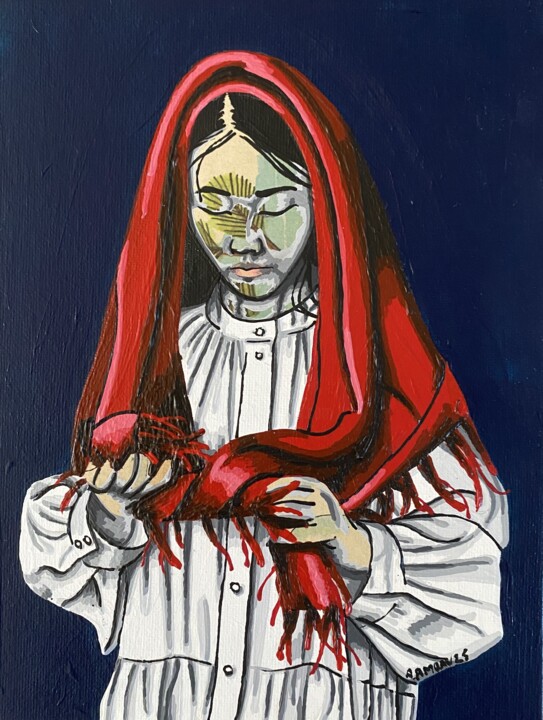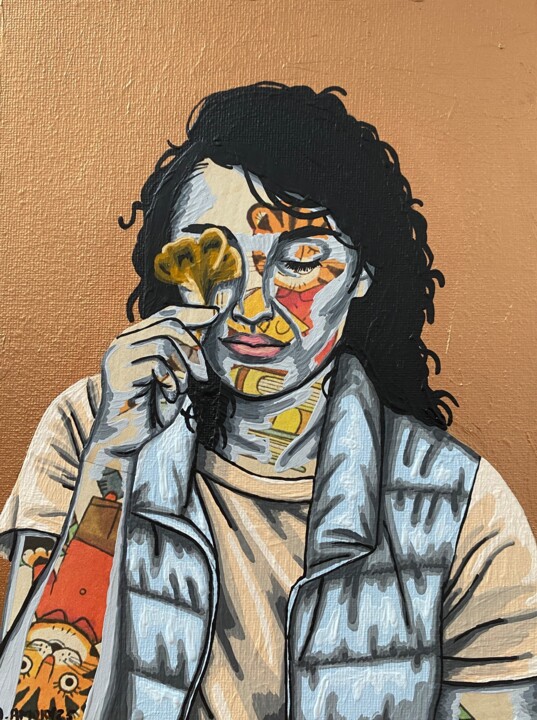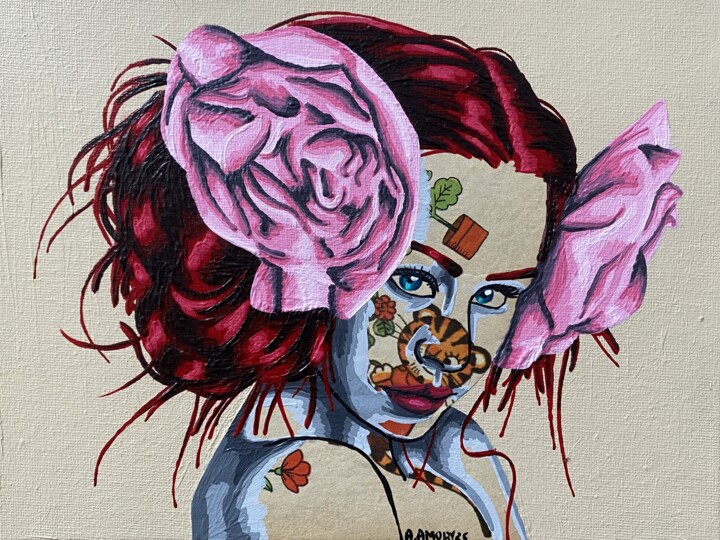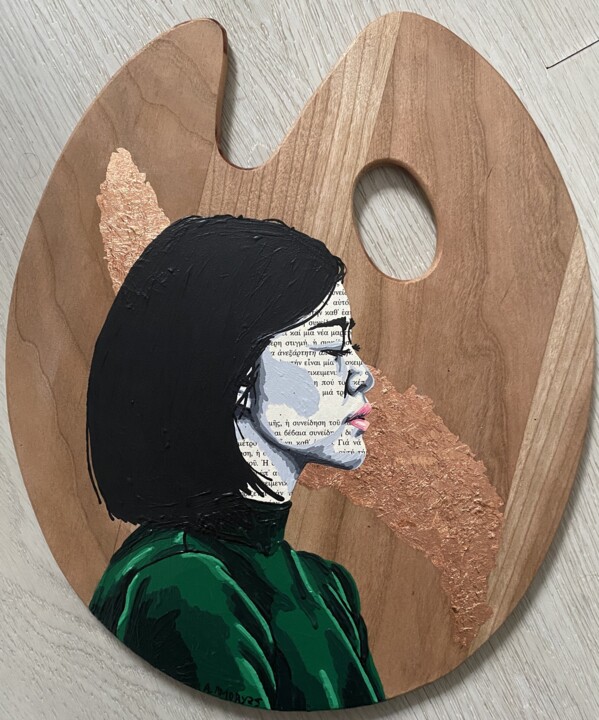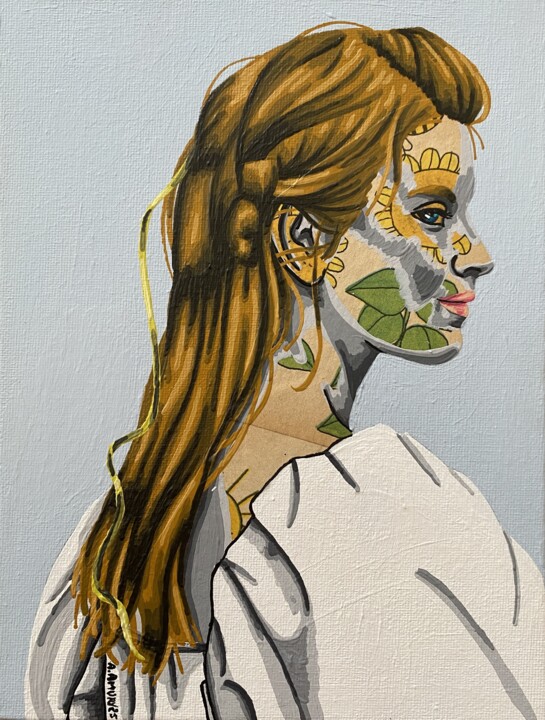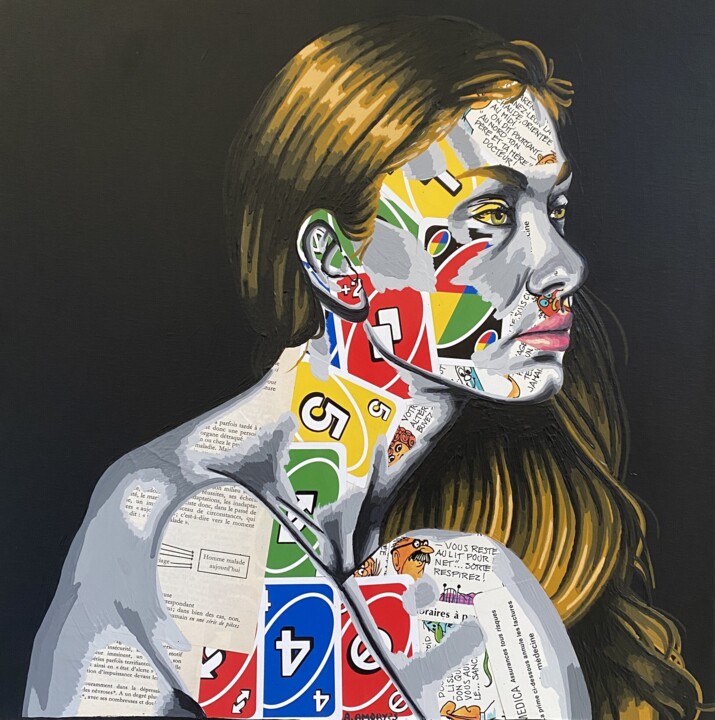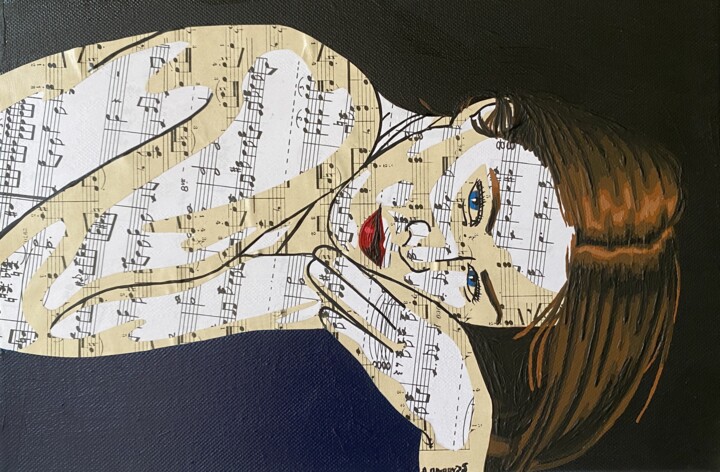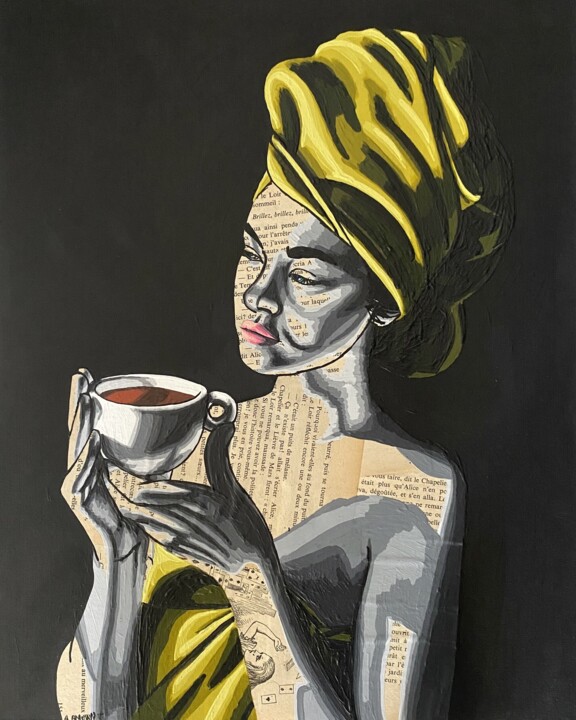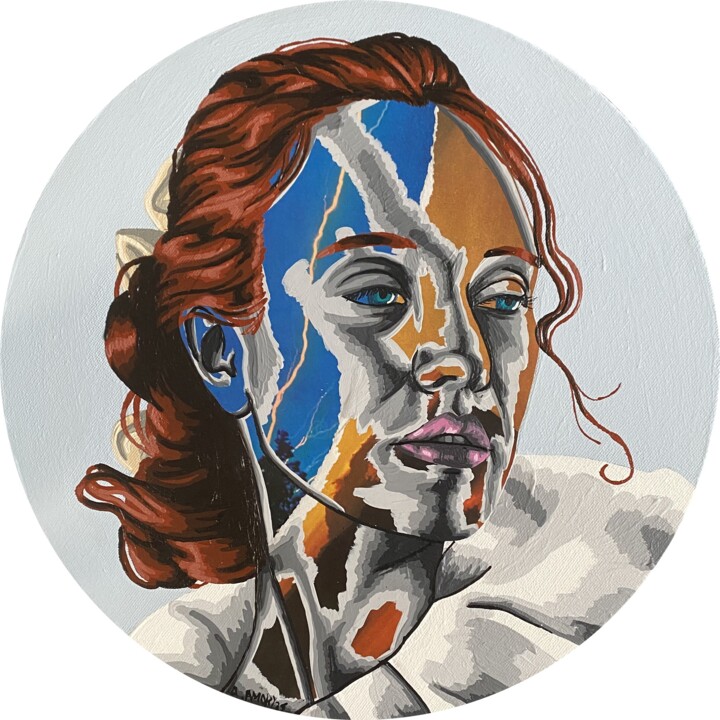What inspired you to create artwork and become an artist? (events, feelings, experiences...)
Since I was little, I have felt out of step with society, the norm and others. I don't have the same desires, the same codes, nor the same aspirations. Art, through drawing and then painting, allowed me to exteriorize this non-conformism and quickly became a means of expressing myself.
What is your artistic background, the techniques and subjects you have experimented with to date?
At first, I only did drawing with graphite pencil and colored pencils. Later, I tried acrylic painting before testing the collage technique in 2013, which has never left me since. My work is entirely made up of portraits of women. It’s a constant in my production.
What are the 3 aspects that differentiate you from other artists, making your work unique?
I use a mixed technique in my paintings: collage rubs shoulders with acrylic to bring the characters to life. To create the volume of the bodies, I only take black and white and therefore use all possible shades of gray. I also like to finish the canvas by going over the contours with a black line, like manga or comic books.
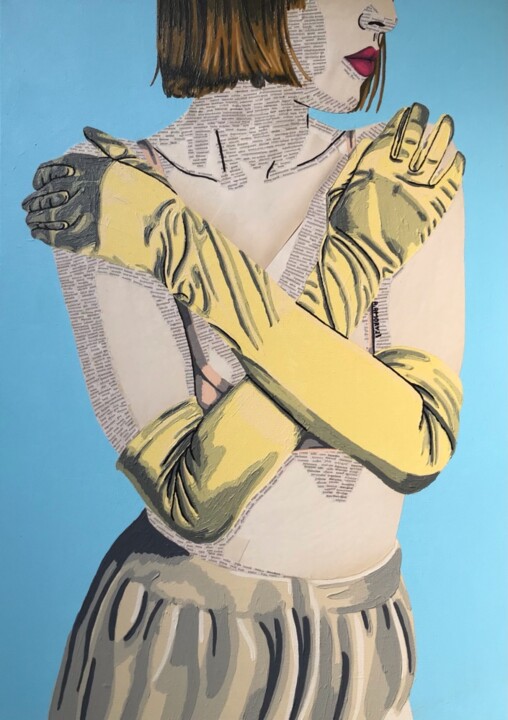 Where does your inspiration come from?
Where does your inspiration come from?
I draw my inspiration from daily life: mine or that of others. Sometimes it is enough for me to hear or read a word, a sentence, to see a scene to immediately have the web formed in my head. I have a notebook at home full of painting ideas waiting to be made!
What is your artistic approach? What visions, sensations or feelings do you want to evoke in the viewer?
My work focuses on the notion of identity, duality and inner conflict. Through the portrait, I deal in particular with the place of women in society, but, in return, I also analyze current society through them. This involves the injunctions they undergo but also personal evolution in our society, where the norm is still the only model and where difference is stifled. I would like each viewer to be able to feel like themselves, free from all pressure and conformism, and to find in my collages a model with which to identify.
What is the process of creating your works? Spontaneous or with a long preparatory process (technique, inspiration from art classics or other)?
Creating a work requires meticulous preparatory work. First, I imagine the entire final painting in my head: model, framing, background color, canvas size, type of paper for the collage. Nothing is left to chance. Then, I make a life-size sketch and then I cut out the woman's body from the paper, which I glue to the support. Finally, I move on to acrylic paint, which will finish the work.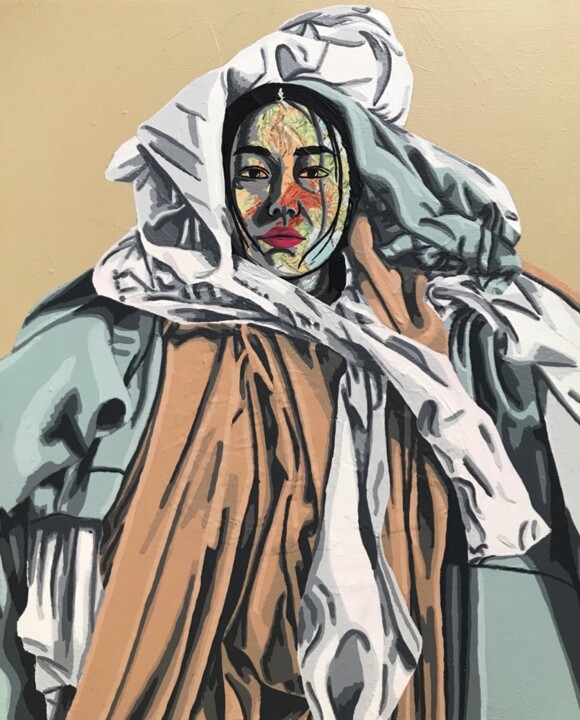 Do you use a particular working technique? if yes, can you explain it?
Do you use a particular working technique? if yes, can you explain it?
I am a collage artist. Therefore, I use different types of paper in my work, which I always combine with acrylic paint. The almost unlimited number of materials allows me to diversify the messages in my paintings: stamps, metro tickets, playing cards, pages of the Dictionary, road maps... are all ways of making the women present in my creations speak.
Are there any innovative aspects in your work? Can you tell us which ones?
I would say that the collage/acrylic combination is quite original in my work. Usually, artists use one or the other.
Do you have a format or medium that you are most comfortable with? if yes, why ?
Canvas on a stretcher is obviously my favorite medium and I really like slender formats like 40 x 80 cm, perfect for portraits but also special formats like round or oval canvases. However, contrary to the codes of contemporary art, I do not appreciate large formats. I have more fun painting on a 20 x 20 cm than a 100 x 70 cm.
Where do you produce your works? At home, in a shared workshop or in your own workshop? And in this space, how do you organize your creative work?
At home, I reserved a small room for painting. I store both the already made canvases and the blank frames waiting there. In the middle, there is a large table to work on (I really like painting flat) and along one of the walls, there is obviously a shelf for all the books I use for collages!
Does your work lead you to travel to meet new collectors, for fairs or exhibitions? If so, what does it mean to you?
I have always preferred to exhibit locally, in alternative public places where the viewer does not necessarily expect to see art. For example, I love putting my paintings in media libraries, since having my works among books gives meaning to my work. Being very introverted, bordering on social phobia, I meet very few collectors. If I can avoid having an opening, I do it. I know that goes against everything expected of an artist, but I prefer to let my work speak for itself, to put myself in the background.
How do you imagine the evolution of your work and your career as an artist in the future?
Strangely, I don't have any big career ambitions. What I would like is just to be able to continue painting as long as possible and for it to always give me as much pleasure and satisfaction.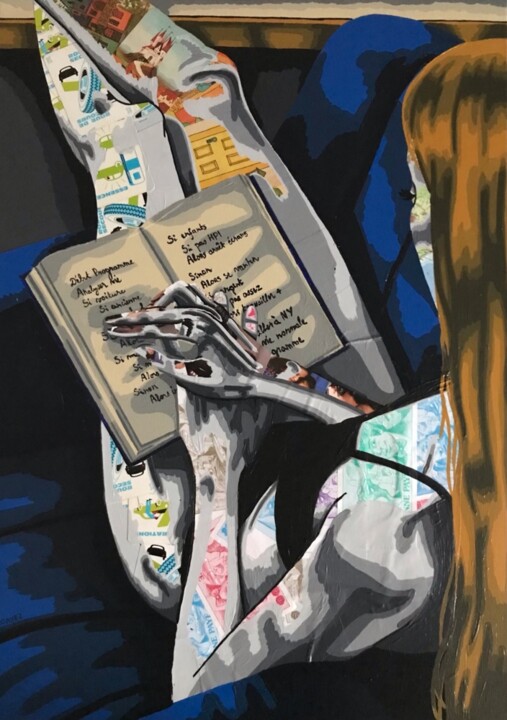 What is the theme, style or technique of your latest artistic production?
What is the theme, style or technique of your latest artistic production?
My latest painting is called “Women”. It's a large painting measuring 100 x 65 cm which takes up my favorite theme of duality by placing two mirrored portraits in opposition, like playing cards. This work celebrates women (as well as all those who identify as such) in all their diversity. The two characters represented here are diametrically opposed: one is more traditional, with his bun, his headband, and attached to religion, while the other, more modern, sports short red hair, a tattoo and a septum ring. Despite everything, both portraits are as legitimate as each other! This painting advocates all women but above all emancipation, acceptance of oneself, but also of others, detachment from norms and difference.
Can you tell us about your most important exhibition experience?
In 2018, a few months after launching myself as a professional painter, I participated in an international fair reserved for young people under 30, in Mantes-La-Jolie, the “Arbustes” fair. I found myself among dozens of other young people and I didn't feel up to it at all. I found that my painting was one of the worst presented. Finally, at the end of the show, I won a prize and I went home in tears: I saw it in some way as a sign that I was legitimate.
If you could create a famous work in the history of art, which one would you choose? And why ?
I very admire the work of Jean-Léon Gérôme and I think that I would have been very proud to create “Sculpturae vitam insufflat pictura” (1893). I am incapable of producing an academic work: my style is more in the romantic direction, with large gestures and crude features. I will never have the finesse of a neoclassical painter. “Sculpturae vitam insufflat pictura” is actually one of my favorite works, which I was able to see in real life during a retrospective of the artist in Paris. It resonates with me because I studied Greek archeology and Gérôme simply brought to life everything I studied during my thesis.
If you could invite any famous artist (dead or alive) to dinner, who would it be? How would you suggest he spend the evening?
If I could, I would like to speak with Vincent Van Gogh. His work, his personal problems and his tragic destiny intrigue me a lot. And then like that, I could tell him that today, he is world famous and that we even find reproductions of his works on umbrellas :)



 Olimpia Gaia Martinelli
Olimpia Gaia Martinelli



